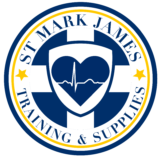Cervical spondylosis involves gradual wearing out or deterioration of the cartilage and bones in the cervical spine. Even though it can be due to an injury, the condition is quite commonly brought about by cumulative changes from daily activities.
After some time, the discs amidst the vertebrae start to dry out and shrink, slip or even collapse which causes the spaces between the bone and disc to narrow down or collapse. This place increased pressure on the facets of the bone which also start to deteriorate. The ends of cartilage might also wear out, eventually causing the bone to rub against bone.
Indications
The indications of cervical spondylosis include neck pain and rigidity that worsens over time along with occasional headaches and even pain in the arms and shoulders.

In case a nerve is crushed, there is also tingling or other unusual sensations in the shoulders, legs or arms. In addition, there is also weakness in the arms, loss of balance and loss of sensation.
The individual will experience the symptoms steadily and intermittently over time, but the symptoms can occur daily. In some cases, these symptoms can be severe.
- Headache
- Muscular spasms
- Neck pain that may or might not radiate to the arms and shoulders
- Nerve issues that trigger pain, numbness or tingling in the shoulders, arms or legs
- Stiff neck that worsens over time
What are the causes?
Cervical spondylosis might be caused by injury but the condition is typically brought about by progressive degenerative changes to the spine that occur from daily activities. Over time, the discs amidst the vertebrae start to dry and shrink which causes the spaces amidst the bone and disc to weaken.
This place increasing pressure on the facet of the bone that start to degenerate. As the cartilage that covers the bone wears out, this result to bone rubbing against each other.
Risk factors
Various factors increase the risk for developing cervical spondylosis. Not all individuals with risk factors will develop cervical spondylosis. The risk factors include:
- Advancing age
- Previous spinal surgery
- Past neck injuries
- Severe cases of arthritis
Management
The commonly used medications for pain and inflammation from cervical spondylosis include non-steroidal anti-inflammatory drugs (NSAIDs). In severe cases involving chronic pain, the doctor might prescribe a narcotic or muscle relaxant or even a tricyclic antidepressant.
Aside from medical care, physical therapy can be beneficial. Surgical intervention to alleviate nerve or spinal cord compression might be required if the individual experiences any loss of movement or feeling or if the pain does not respond to other treatment options.
The commonly used medications include the following:
- Non-steroidal anti-inflammatory drugs (NSAIDs)
- Muscle relaxants
- Nerve pain medications
Quick Note / Disclaimer
The material posted on this page on cervical spondylosis is for learning and educational purposes only. To learn to recognize and manage spinal injuries and conditions, register for a first aid and CPR course with one of our training providers.
